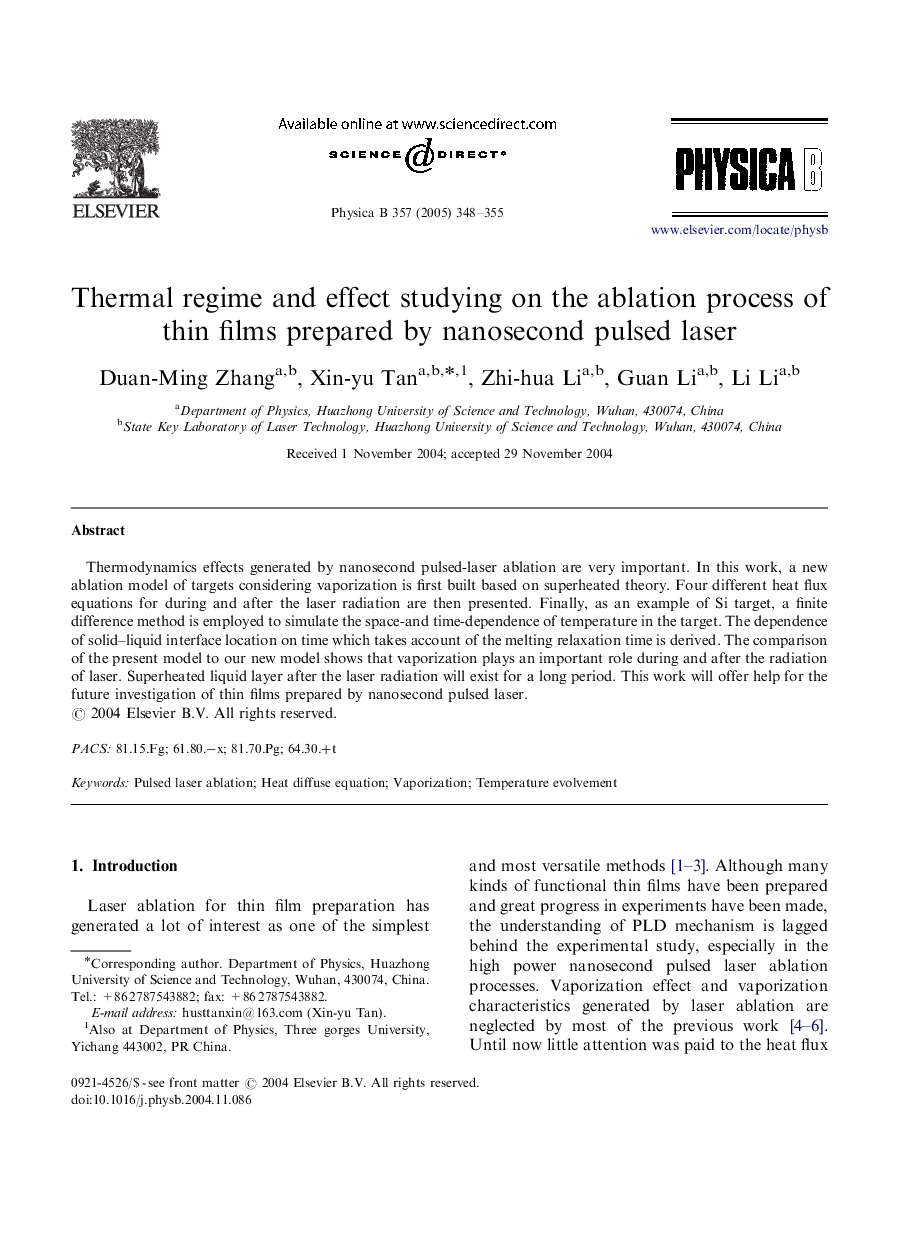| Article ID | Journal | Published Year | Pages | File Type |
|---|---|---|---|---|
| 9837814 | Physica B: Condensed Matter | 2005 | 8 Pages |
Abstract
Thermodynamics effects generated by nanosecond pulsed-laser ablation are very important. In this work, a new ablation model of targets considering vaporization is first built based on superheated theory. Four different heat flux equations for during and after the laser radiation are then presented. Finally, as an example of Si target, a finite difference method is employed to simulate the space-and time-dependence of temperature in the target. The dependence of solid-liquid interface location on time which takes account of the melting relaxation time is derived. The comparison of the present model to our new model shows that vaporization plays an important role during and after the radiation of laser. Superheated liquid layer after the laser radiation will exist for a long period. This work will offer help for the future investigation of thin films prepared by nanosecond pulsed laser.
Related Topics
Physical Sciences and Engineering
Physics and Astronomy
Condensed Matter Physics
Authors
Duan-Ming Zhang, Xin-yu Tan, Zhi-hua Li, Guan Li, Li Li,
